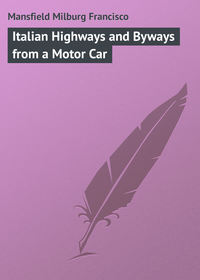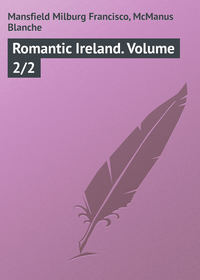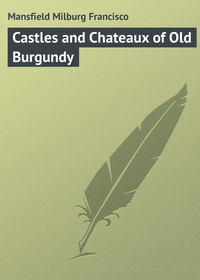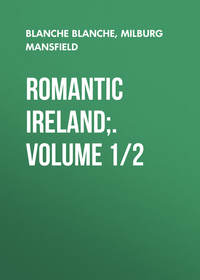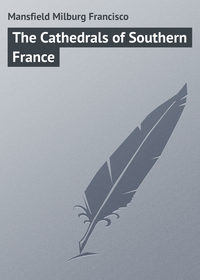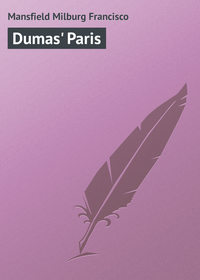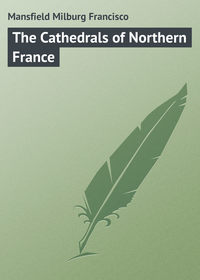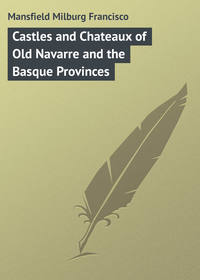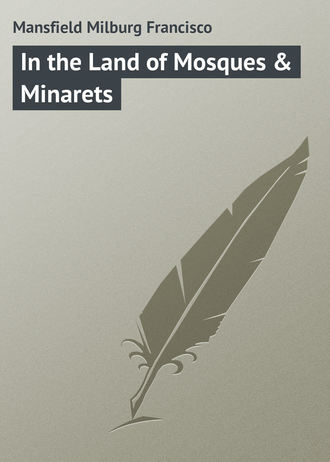 полная версия
полная версияIn the Land of Mosques & Minarets
From daybreak, the vast quadrangle on the Route de Blida, outside Boufarik’s rectangular fortifications, is given over to tents, shops, and booths. Here and there is a corral of donkeys or mules, or a pen full of sheep. Braying donkeys and bleating sheep are everywhere. The great avenues of plane-trees form a grove, and wherever they cross some more powerful or wily trader has squatted on the ground, to the discomfort of his less fortunate competitor, who, perforce, has to content himself with the shady side of a camel. Leading up to this unique market-place is a splendid avenue of orange-trees.
A superb disorder of trumpery brummagem cutlery, stuffs, firearms and pots and pans clutter the ground in every direction. Water-sellers and milk-sellers are threading everywhere, each loaded down with his peau de bouc, and fruit and bread sellers with their wicker baskets. Saddlery, horseshoes, ropes of hemp, jute, and camel hair all mingle in a picturesque chaos. There are even hand sewing-machines, of the little doll-house variety that the native populations of India, Japan, Patagonia affect as their sole intercourse with modernity.
A few women mingle among the groups, but mostly the crowd is made up of men. Rarely are these market women beautiful except in a savage way. They possess most of the male characteristics of manner, and but few of the wiles and little of the coquettishness of woman. Their visages are tanned to copper colour and sowed with ridges and folds. Many indeed are out and out negresses.
Here beside a stall sits a Soudan negress of fat, flabby visage and large round eyes, as amiable as some greasy animal in captivity – and about as intelligent. She is only a watcher or caretaker; the real owner of the stall, with its melons, its skins, and its baskets, is over yonder in a Moorish café playing dominoes.
From her head and shoulders hang great chains of silver, and in the lobes of her ears are pendants which may be gold or not. She is a barbaric savage, splendid in her savagery and indifferent, apparently, to everything and everybody. But she is part of the setting nevertheless, and she is good to see.
The coast plain west of Algiers, the Sahel properly called, is in strong contrast with the cultivated plain of the Mitidja. The whole journey from Algiers out to Cherchell and back, via Miliana, Blida, and Boufarik, gives one as good an idea of the ancient and modern civilization of North Africa as one could possibly have.
Blida sits calmly in its fertile plain at the foot of the imposing hills which, grouped together, form the mountains of the Beni-Salah. All round about are orange groves and olive-trees of the very first splendour and production. The Bois Sacré, Blida’s chief sight, is as picturesque and romantic a woodland as the sentiment of a poet or an artist ever conjured up.
Blida dates from the sixteenth century, when a number of Andalusian families settled here because of the suitability of the region for the cultivation of the orange, – and the commerce has been growing ever since. In the olden times Blida was known as Ouarda, the little rose; but afterwards when the Turks and Corsairs held their orgy there, it came to be called Khaaba, the prostitute. Since that day it has got back its good name and is one of the liveliest, daintiest, and altogether attractive small cities of Algeria. The native and the French alike know it is la voluptueuse or la parfumée.
Within Blida’s Bois Sacré is the venerated marabout of Sidi-Yacoub-ech-Chérif, one of the celebrated kouba shrines of Islam. No reproduction of it can do its cool, leafy surroundings justice. It is the very ideal of a holy man’s retreat and one of the most appealing of shrines to those possessed of the artist’s eye. Fragonard or Corot might have spent a lifetime painting the forest interiors of the unspoiled wild-wood of Blida’s Bois Sacré. The writer is not sure that the author of “Mignon” ever saw or heard of Blida, but his verses were most apropos:
“Connais-tu le pays où fleurit l’oranger,Le pays des fruits d’or et des roses vermeilles?…Où rayonne et sourit comme un bienfait de Dieu,Un éternel printemps sous un ciel toujours bleu…C’est là que je voudrais vivre,Aimer et mourir… C’est là!..”In connection with Blida it is worthy of record that the celebrated and venerable bach-agha Sid Ben Gannah, of Biskra, Grand-Chef of the Sud-Constantinois, recently underwent a “cure” at the military hospital at Blida. His malady had become a chronic one, and his complete restoration to health through the aid of the capable doctors of the hospital and the mild soft air of Blida has done more than anything else to allay the fanatical superstition of the native against the efficacy of the proper professional treatment of the sick.
The “cure” experienced by their favourite bach-agha, the friend of the King of England and bearer of a hundred personal decorations, the “grand old man” of the country, has been heralded wide amongst the natives, from Constantine to Beni-Souf, and Ouardja to El Oued, and has struck the death-knell of the voodooism of the indigène “toubibs” and quacks.
For many years yet, it is to be hoped, the native may continue to demand the benedictions of Mohammed for their respected chief:
“Ou sela Allah ala on moulano on ala hebel daro ou ala sahabou ou Salem!”
A peculiarity of the Mauresques of Blida is that they veil themselves in a most strange manner. Instead of covering their faces, leaving only two glittering black eyes peeping out, they cover all but one eye. A woman who veils after that manner looks suspicious. Beware!
At the Mediterranean extremity of the great plain in which lies Blida – a veritable Garden of Eden, with oranges, figs, grapes, pomegranates and even the apples of Eve – is the little hill-town of Kolea.
Kolea is extraordinary from every point of view. Kolea is a military town; the Zouaves are everywhere, and in their train have come a following of Greeks, Turks, and Maltese. But the little garden-town with its Jardin des Zouaves, its two mosques, its turreted fountain and its modern Renaissance Mairie is attractive throughout, albeit it is not the least Oriental.
The Hôtel de France, partly Moorish (the good part), and partly French (the ugly part), is one of those French inns that are indescribably excellent. There is a sure-to-be Gabrielle who presides at the cook stove and another who serves at table and orders up the vin rosé from the cellar when the red or the white wine is too strong (16 degrees) for one’s taste. They are wonderfully good, those wines of the Sahel.
It is a remarkably brilliant strip of coast-line extending west from Algiers, and it should be covered in its entirety as far as Cherchell if one would realize the varied beauties and attractions of the Algerian littoral. From Saint-Eugène and Point Pescade, suburbs of Algiers, a fine road extends all the way to Cherchell, a matter of nearly a hundred kilometres, the turquoise Mediterranean always to the right.
At Sidi-Ferruch the French troops first landed when on their conquest of Algeria. At Staouëli-la-Trappe is an abbey where there are a hundred and fifty lay brothers who grow oranges and fine fruits, and while their dull lives away comfortably under the brilliant skies of Africa.
Going still further along the coast, we come to Castiglione, sheltering itself behind a sand-dune, from whence it is but a few kilometres to the “Tombeau de la Chrétienne,” as imposing and extraordinary a monument as any of the pyramids of Ghizeh. Architecturally, if not beautiful, it is imposing, and mysterious, in that it is constructed on a most original plan. It is a great mound of superimposed cut stone, entered by a pillared portico, now somewhat ruined. This funeral monument has an appeal for the archæologist and the merely curious alike far beyond many a more conventional monument of its class. The gigantic monument is still supposed to contain many and wonderful treasures, unless they were removed and lost in the forgotten past, for as yet none have been brought to light. Tradition has the following tale to tell of this monumental sepulchre.
One day a Christian woman, fleeing from a rabble of unholy men and women, took refuge in this commemorative shrine, built by some holy person whose name is forgotten. Her pursuers, coming upon her in her retreat, would have fallen upon her and done her injury, even as she was at her prayers, when suddenly a myriad of flies, mosquitoes, and wasps put the invaders to flight. The frightened woman lived a hermit’s life here in her stronghold, and at the end of her span came to die within the impenetrable walls. Ever afterward the cone-like mound was known as the Tombeau de la Chrétienne.
The Arabs call this bizarre tomb Kaber-Roumia. In 1866 it was explored by a band of archæologists, who decided that it was the tomb of the Kings of Mauretania, built by Jubal II in the reign of the great Augustus.
The reader may take his choice of the reasons for the existence of this remarkable monument. One is about as well authenticated as the other. It existed already in 1555, for the records tell that a Pacha of Algiers, Salah Raïs, tried, but without success, to destroy the edifice by firing stone cannon-balls at the mass. Nothing happened; the monument was not despoiled of its outlines even. This fact speaks badly either for the old Turkish ammunition or for the skill of the gunners who fired it.
Tipaza, the chef lieu of a commune with a population of between two or three thousand, is a little coast town and comes next on the itinerary from Algiers to Cherchell.
At Tipaza are still more Roman ruins, covering an area over two thousand metres square. Tipaza was one of the cities of Mauretania where the Christian religion was practised with the utmost fervour. The patron saint of the place was one Salsa, a young girl, who, according to tradition, was put to death at the beginning of the fourth century for having destroyed a pagan idol. Such was religious partisanship of the time. A century later the Vandal king Hunéric, in order to subdue Christianity, caused all those professing it to have their right hands cut off and their tongues cut out. This was the extreme of cruelty and its effect on Christendom is historic.
The Roman monuments still existing at Tipaza include a theatre, which is in a poor state of preservation. This has been restored in recent years to the extent that commemorative dramatic performances have been held here in the open air, as at Carthage, and at Orange in Provence. The outlines of a great basilica of nine naves, where Sainte Salsa was buried, are still well preserved, and there are also something more than fragments of the baths and water-works, which supplied the drinking water for the surrounding country.
From Tipaza to Cherchell is thirty kilometres by road, which is the only means of reaching the latter place unless one goes from Algiers by steamer along the coast, a voyage not to be recommended for various reasons.
Cherchell possesses the best-preserved outlines of an historic occupation of the past of any of the old Roman settlements of the “Département d’Alger.” First as the Phœnician colony of Iol, and later, under Jubal II, as Cesarea, the capital of Mauretania. Cherchell came under the sway of the Roman Empire in the year 40 of the Christian era. The province of Mauretania extended from the Moulouia to the Setif of the present day. In the middle ages Cesarea lay dormant for three centuries; but before this, and again afterwards, its activities were such that the part it played in the history and development of the country was most momentous.
As late as the early years of the past century, the city and port was the refuge of a band of pirates which pillaged throughout all the western waters of the Mediterranean.
The ancient port of Cherchell was the scene of the comings and goings of a vast commerce in Phœnician and Roman times; and the present state of the preservation of the moles and jetties of this old harbour of refuge stamps Cherchell as worthy of comparison with Carthage.
The Roman ruins at Cherchell are stupendous, though fragmentary, and not overnumerous. In the inefficiently installed “Musée” are many of the finest gems of antique sculptures and statuary yet found in Africa. There is a catalogue of these numerous discoveries, compiled by M. Wierzejski, which can be had at the book-shops of Algiers, and which will prove invaluable to those interested in the subject in detail.
The chief Roman monuments remaining in place above ground are the Western Baths and the Central Baths: the Cisterns, the Amphitheatre, – where was martyred Sainte Marciane, – the Circus, and the extensive ramparts sweeping around to the south of the town from one part of the coast-line to another.
Cherchell has a population of nine thousand souls to-day, of which perhaps a third are Europeans. In Roman times it must have had a vast population judging from the area within the ramparts.
The ancient Grande Mosquée of the Arab occupation is now a military hospital. This has had added to it numerous beautifully proportioned columns, with elaborately carved capitals, taken from the ruins of the Central Baths.
South from Cherchell, back from the coast towards the mountains of the “Petit Atlas,” fifty kilometres or more by a not very direct road, and connected by a service of public diligences, is Miliana. One will not repent a “stop-over” at this unspoiled little African city. The country reminds one of what the French would call a “petite Suisse Africaine.” The valleys and plains have a remarkable freshness of atmosphere that one does not associate with a semi-tropical sun.
Miliana itself sits high on the flank of the Zaccar-Gharbi, and is the lineal descendant of the Zucchabar of the Romans. Actually, it was founded in the tenth century. At the time of the French occupation of Algeria Abd-el-Kader here installed Ali-ben-Embarek (who afterwards became the Agha of the Mitidja under the French). But with the occupation of Médea, in 1840, the stronghold fell and the Arab power was broken for ever in these parts.
Miliana is a walled town to-day, as it was in the days of the Romans and Berbers. On the north is the Porte du Zaccar, and on the south the Porte du Chélif. This snug little hill-town, with only a quarter part of its population European, not counting half as many more Israelites, has a character which places it at once in a class by itself. It has an attractive little commercial hotel, where one eats and drinks the best of the countryside and pays comparatively little for it.
A wide terrace, or esplanade, runs around one side of the town overlooking the walls, and a wide-spread panorama stretches away on the east and west and north and south into infinity, with the imposing mass of the Ouarsenis, called “l’œil du monde,” as the dominant landscape feature. The terrace is called locally the “coin des blagueurs.” Why, no one pretends to answer, except that all the world foregathers here to stroll and gossip as they do on the “cours” of a Provençal town.
Miliana’s mosque is a simple but elegant structure, graceful but not ornate, imposing but not majestic. It is dedicated to Sidi-Ahmed-ben-Youssef, a venerated marabout who lived all his life hereabouts. He had as bitter and satirical a tongue as Dean Swift when speaking of the men and manners of those about him.
Turning eastward again from Miliana towards Algiers, one passes the entrance to the Gorges de Chiffa, the road to Médea, and finally Blida, the centre of the little yellow, thin-skinned orange traffic.
From Blida a classic excursion is to be made to the Gorges de Chiffa, where, at the Ruisseau des Singes, formerly lived a colony of hundreds, perhaps thousands of monkeys in their wild native state. Nowadays the only monkeys one sees are on the frieze in the salle-à-manger of a most excellently appointed little wayside hotel.
Hamman-R’hira, on the road between Miliana and Blida, is an incipient watering-place, where one can get tea and American drinks, and play croquet.
Its mineral springs – much like those of Contrexeville in France – have been famous for centuries, and the old Moorish baths are still used by the Moors and Arabs round about. For the Europeans who, throughout the spring and winter season, throng to the great hotel, now managed by a limited company, there are other baths more luxuriously installed.
Hamman-R’hira is an attractive enough place of itself, and would be more so were it not filled with rheumatics and anæmics. The frequenters of the Moorish baths are more interesting than the European clientèle for the investigator of men and manners.
CHAPTER XV
THE GREAT WHITE CITY – ALGIERS
THE first view of Algiers from the ship, as one enters the port, is a dream of fairyland, “Alger la Blanche!” “El Djesair la molle!” If it is in the morning, all is white and dazzling; if in the evening, a rosy violet haze is over all, with the background of the “Petit Atlas” and the Djurjura shutting off the littoral from the wide Sahara to the south. At twilight a thousand twinkling lights break out, from the Kasba on the height, from Mustapha, from the terrace boulevard which flanks the port and from the ships in the harbour. A stronger ray flashes from the headland lighthouse at Cap Matifou, and still others from war-ships in the great open gulf. Algiers is truly fairy-like from any point of view.
The Algiers of to-day is a great and populous city. It is the Icosium of the Romans doubled, tripled, and quadrupled. Three towns in juxtaposition stretch from Saint-Eugène on the west to Mustapha on the east, while Algiers proper has for its heart the “Place du Gouvernement” and the “Grande Mosquée.”
The Place du Gouvernement is a vast square, a sort of modern forum, flanked on one side by the Mosque of Djema-el-Djedid, the Grande Mosquée, and on the others by shops, cafés, and hotels. From it stretch the four great thoroughfares of the city, Bab-el-Oued, La Marine, La Kasba, and Bab-Azoum. All the animation and the tumult of the city centres here, and the passing throng of Arabs, soldiers, Jews, Mauresques, and the French and foreign elements, forms an ethnological exhibit as varied as it is unusual.
Algiers has a special atmosphere all its own. It lacks those little graces which we identify as thoroughly French, in spite of the fact that the city itself has become so largely Frenchified; and it lacks to a very great extent – from almost every view-point – that Oriental flavour which one finds at Cairo and Tunis. But for all that, Algiers is the most wonderful exotic and conventional blend of things Arab and European on top of earth.
The environs of Algiers are rugged and full of character, opening out here and there into charming distant vistas, and wide panoramas of land and sea and sky. All is large, immense, and yet as finely focussed as a miniature. One must not, however, attempt to take in too great an angle at a single glance, else the effect will be blurred, or perhaps lost entirely.
The impulsive ones, who like the romance of Touraine and the daintiness of valley of the Indre and the Cher, will find little to their liking around Algiers. All is of a ruggedness, if not a savageness, that the more highly developed civilization of the “Midi” has quite wiped out. Here the ragged eucalyptus takes the place of the poplar, and the platane is more common than the aspen or the birch. The palm-trees are everywhere, but just here they are of the cultivated or transplanted variety and generally of the feather-duster species, decorative and pleasing to look upon, but givers neither of dates nor of shade.
Algiers and its life, and that of its immediate environs, whether the imported gaieties of Mustapha or the native fêtes of Bouzarea, and the periodical functions for ever taking place in the city itself, give about as lively an exposition of cosmopolitanism as one may observe anywhere.
The historical monuments of Algiers are not as many as might at first be supposed, for most of its memories of historic times deals with places rather than things; and, indeed, this is true of the whole surrounding country, from Tizi-Ouzou in Kabylie to Cherchell and Tipaza in the Sahel, to the west.
The chief of Algiers’ architectural charms – aside from that varied collection of crazy walls and crooked streets which make up the Arab town – are the Archbishop’s Palace, – a fine old Arab house of a former Dey of Algiers; the Peñon and the Amirauté, or what is left of it, on the mole below the Palais Consulaire; its three principal mosques; the cathedral, – the mosque of other days transformed; the Palais d’Eté of the Governor-General, in part dating from the seventeenth century, and the Kasba fortress, high up above the new and old town.
These are all guide-books sights, and the only comments herewith are a few hazarded personal opinions.
High above, up through the streets of stairs, scarce the width of two people side by side, and still up by whitewashed walls, great iron-studded doors and grilled windows, sits the Kasba, the great fortress defence of Algiers since the days when Turkish rule gave it the most unenviable reputation in all the world. There is a continual passing and repassing of all Algiers’ population, apparently, from the lower town to the height above, Europeans, Arabs, Moors and Jews. The scene is ever changing and kaleidoscopic. A white wraith toddles along before one, and, as you draw near, resolves into a swaddled Mauresque who, half afraid, giggles at you through the opening of her veil and suddenly disappears through some dim-lighted doorway, her place only to be taken by another form as shapeless and mysterious.
This is the Arab town day or night; and but for the steep slope one might readily lose himself in the maze of streets and alleys. As it is all one has to do is to keep moving, not minding the gigglings and gibings of the natives. One enters the ville Arabe by any one of a hundred streets or alleys. At its outmost height you are at the Kasba; when you reach the bottom you are in the European town. To the right or left you reach a sort of encircling boulevard which in turn brings you to the same objectives. It is not so difficult as it looks, and one need fear nothing, night or day, until he reaches the European town and civilization, where thievery and murderings are nightly occurrences.
Here in the old Arab town one is in another world; here are the maisons à terrasse, the mosques, the narrow ruelles with their overhung porches and only occasional glimpses of the starry sky overhead. Verily it is as if one had left the electric-lighted “Place,” the cafés chantants, the tramway, and the shipping behind in another world, though in reality a hundred steps, practically, in any direction will bring them all within sight and sound and smell again.
After all, the quaint streets of the hillside town are Algiers’ chief sights, after the magnificent panorama of the bay and that wonderful first view as seen from the ship as one enters the port.
Algiers’ native quarter has been somewhat spoiled by the cutting through of new streets, and the demolishing and refurbishing of old buildings; but, nevertheless, there are little corners and stretches here and there where the daily life of the native men and women goes on to-day as it did when they lived under Turkish rule. Here are the shopkeepers of all ranks: a butcher dozing behind his moucharabia, looking like the portraits of Abd-el-Kader; a date-seller, the image of the Khedive of Egypt; a baker with a Jewish cast of figure; and next door a café-maure with all the leisure population of the neighbourhood stretched out on the nattes and benches, smoking and talking and drinking. It is not fairyland, nor anything like it; it is not even Oriental; but it is strange to Anglo-Saxon, or even European, eyes that such things should be when we ourselves are wallowing in an over-abundance of labour-saving, comfort-giving luxuries which the Arab has never dreamed of. We chase our flies away with an electric fan, whilst he idly waves a chasse-mouches of antique pattern, and does the thing quite as effectively, and with very little more effort.
They are very grave, magnificently tranquil, these turbaned Turks and Jews and Arabs, sitting majestic and silent before some café door, clad in all the rainbow colours of civilization and savagery. Their peace of mind is something we might all acquire with advantage, instead of strenuously “going the pace” and trying to keep up with, or a little ahead of, the next.




